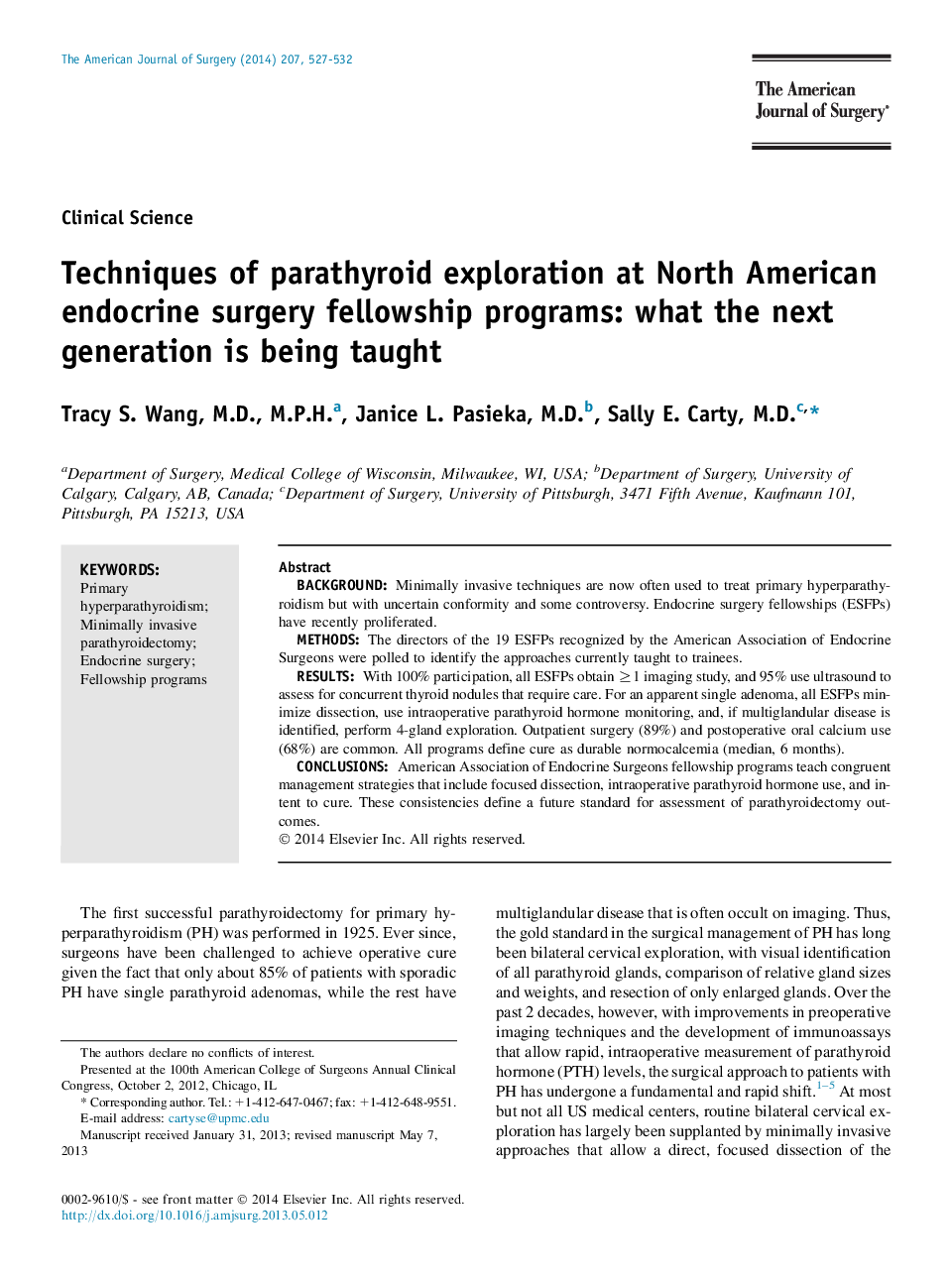| Article ID | Journal | Published Year | Pages | File Type |
|---|---|---|---|---|
| 4279055 | The American Journal of Surgery | 2014 | 6 Pages |
BackgroundMinimally invasive techniques are now often used to treat primary hyperparathyroidism but with uncertain conformity and some controversy. Endocrine surgery fellowships (ESFPs) have recently proliferated.MethodsThe directors of the 19 ESFPs recognized by the American Association of Endocrine Surgeons were polled to identify the approaches currently taught to trainees.ResultsWith 100% participation, all ESFPs obtain ≥1 imaging study, and 95% use ultrasound to assess for concurrent thyroid nodules that require care. For an apparent single adenoma, all ESFPs minimize dissection, use intraoperative parathyroid hormone monitoring, and, if multiglandular disease is identified, perform 4-gland exploration. Outpatient surgery (89%) and postoperative oral calcium use (68%) are common. All programs define cure as durable normocalcemia (median, 6 months).ConclusionsAmerican Association of Endocrine Surgeons fellowship programs teach congruent management strategies that include focused dissection, intraoperative parathyroid hormone use, and intent to cure. These consistencies define a future standard for assessment of parathyroidectomy outcomes.
